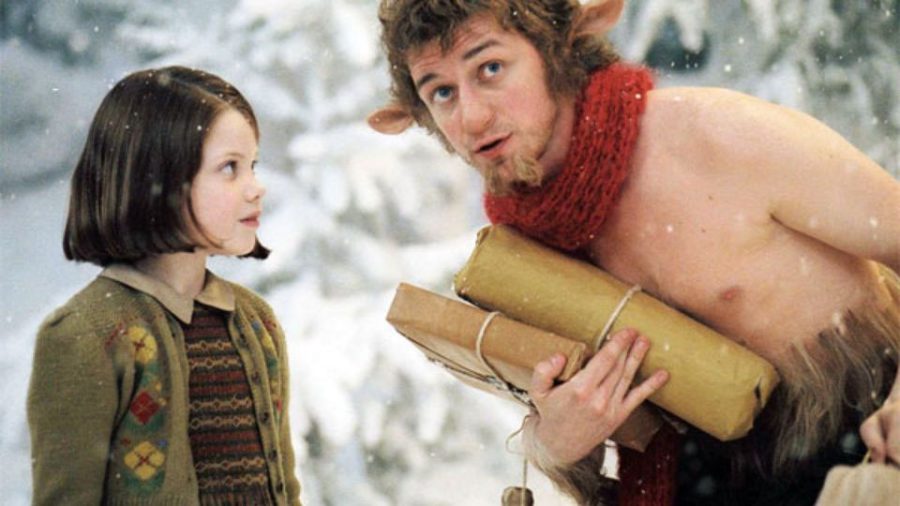Turning a book into a movie is no easy task for a filmmaker, especially when that book already has a community of dedicated fans who know and love the original story.
The line between a great adaptation and a flop is thin and often difficult to define—thousands of movies over the years have attempted the feat, some to resounding success, and others to scathing criticism.
Books are not an inherently visual medium.
Readers have to look at a book to be able to read the words on the page, but that’s all there is—words on a page. Of course, anyone who’s found themselves lost between the covers of a great novel could argue otherwise.
Readers don’t simply comprehend the sentences they are reading, they see the events taking place through their mind’s eye. With the help of an author’s description, or lack thereof, a reader can visualize exactly what a character looks like and see the world they inhabit in full color.
Every reader’s image of these fantastical worlds is one-of-a-kind, which is why making a movie adaptation out of a beloved novel is often so difficult for filmmakers.
It seems that while many filmmakers strive to stay true to the original stories they adapt into films, a large percentage of them fall short of meeting fans’ expectations.
It’s impossible to turn a book into a film without altering some piece of the original work.
This is often because a story that can fill hundreds of pages in a novel is much longer than one that can be told in a two-hour film.
“The best adaptations aren’t of novels, they’re of novellas,” said Cullen Hamblen, a junior studying film and television and graphic design.
A fan of Stephen King, Hamblen said he thought the best movie adaptions of King’s books were “The Mist” and “Shawshank Redemption,” both of which are based on stories with less than 200 pages.
When filmmakers have less content to adapt their movies from, they will naturally have less content that needs to be cut. While there may be changes for other reasons, using shorter source material for an adaption is a wise first step toward pleasing fans.
“My least favorite adaption was ‘John Dies at the End,’” said Emily Quinn, a senior studying film and television. “It’s genuinely one of the weirdest, strangest, funniest and attention-grabbing books I’ve ever read, [but] it’s also pretty lengthy … and they cut out some of my favorite parts of the book.”
Casting actors is often a difficult part of creating a film adaption.
Readers have preconceived notions of how their favorite characters should look, sound and act, and while some fans could believe an actor was cast perfectly for a role, others could feel displeased by the choice.
“I thought ‘John Dies at the End’ was cast poorly, besides Paul Giamatti,” said Quinn. “Definitely a concept that wound up better on page than on screen, sadly.”
Art direction is another risky area for film adaptions for the same reason as casting—that being, every reader has a different image of what a fictional world is like.
Stories that take place in the real world have an advantage—especially if they are able to film in the actual locale.
Science fiction and fantasy flicks tend to face more of a challenge, but computer technology can create some incredible things for films and gives stories with more complicated settings a chance to immerse their audience in a different world.
“The first time I saw ‘The Chronicles of Narnia: The Lion, the Witch and the Wardrobe,’ I was blown away,” said computer science junior Max Faridian. “The visuals are beautiful and made me feel like I was in a land of eternal winter.”
While issues with source material length, casting and art direction must be given careful attention in the making of a film adaption, it doesn’t matter how good these areas are if the whole film doesn’t tie together well. An adaptation can only truly be great if it captures the essence of its source material.
“‘Scott Pilgrim vs. the World’ is my favorite [film adaptation] because of how much of the style of the graphic novel that Edgar Wright took into consideration,” Quinn said. “It very much embraces the idea of the story playing out like a video game.”
If filmmakers can find a way to take the heart of a book and adapt the story into a movie while keeping that heart together, fans will appreciate the effort.
“I don’t think there’s a real limit to how much a movie can change about a book, as long as the core idea is still intact and the film is well made,” Faridian said.
There is no formula to writing a bestseller and there is no step-by-step guide to creating the perfect film adaptation.
Some will be average and many will fall short of expectations, but there will always be a select few film adaptations that do justice to their source material and are simply amazing.
Follow Victoria Pereira on Twitter.









